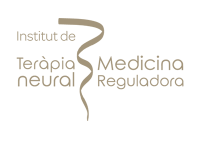Post Botox Care
12 Minutes
If you are worried about fine lines and wrinkles on your face and have been looking to take action, you might like to explore botox. Botox injections are a well-known and effective method for regaining your youthful appearance. Yet, if you have determined that Botox could be good for you, are you informed that you would need to practice a substantial amount of care after botox injections?
As per the American Society of Plastic Surgeons (ASPS), over 7 million Botox injections (also called Botulinum Toxin shots) were used for the treatment of wrinkles and medical conditions in the United States in 2020. In 2018, slightly more than two million injections of dermal fillers (Restylane, Juvederm, etc.) were administered. Botox is the most popular noninvasive injectable skin rejuvenation treatment among those who desire to stop and turn the “clock” on their skin.
Dermatologists have also discovered ways to maximize the astounding results of Botox by analyzing the efficacy of various Botox aftercare treatments. This article discusses the top after botox rules and suggestions that Botox injectors tell patients to adhere to in order to maintain youthful, flawless facial skin.
If you would like to learn more about the things you should and shouldn’t do after getting botox, continue reading as we’re going to discuss what botox is. What should be done after a Botox injection (aftercare)? What should you avoid after receiving a botox injection?
The cosmetic type of botulinum toxin, which consumers often refer to as “Botox,” is a renowned injectable that lessens or removes facial fine wrinkles and lines temporarily. Frequent treatment sites include forehead creases, frown lines, and crow’s feet around the eyes. Other areas addressed include the thick jaw muscles, the thick bands in the neck, the gummy smiles, and the lip lines.
Botox is a common method for removing facial wrinkles and creases. Botulinum toxin is a chemical generated from bacteria that has been purified. Botulinum toxin injections inhibit neural signals to the muscle into which they are administered. In the absence of a stimulus, the muscle cannot contract. The consequence is a reduction in unsightly face wrinkles or looks. Botox®, Xeomin®, Dysport®, and Jeuveau® are well-known examples of botulinum toxin type A injections.
Botox is often injected into facial muscles to reduce the appearance of wrinkles. It comprises the neurotoxin produced by the Clostridium botulinum bacteria, which temporarily paralyzes muscles for a younger, smoother appearance. Botox injections can be administered wherever you want to see less pronounced wrinkles.
Botox inhibits the transmission of neural signals to the muscles, so stopping the muscles from flexing, tightening, or contacting. This helps them to relax and creates the appearance of softer facial skin. Botox injections can be performed at your doctor’s or dentist’s office in a relatively short amount of time. Although the effects of Botox are not instantaneous and can take as long as 2 weeks to fully manifest, you should expect your young appearance to endure between 3 to 6 months.
Yet, are there any particular botox post-treatment measures you could do to maximize the results of your Botox treatment? There are, and you should surely adhere to them after receiving injections.
Botox injections are typically rapid, painless, and generally affordable. Here is what to anticipate.
If you’re afraid of needles, you should know that Botox shots are administered with a needle similar to the one used for insulin injections. Consider the needles being used to draw blood; they are far larger than the ones used for Botox injections. These are minor issues. If you’re performing this procedure for cosmetic purposes, it must be pleasant and comfortable.
Immediately following Botox injections, you will see small red lumps and blood spots that resemble mosquito bites. These will dissipate within 20 to 30 minutes. However, you won’t observe the skin-refining effects for 3 to 5 days (and up to 2 weeks). Cosmetic benefits are not instantaneous, nor are they permanent.
Botox will soften your skin, but it will not transform your face into an Instagram filter (particularly if you visit a responsible injector who administers a small amount). Your skin will appear smoother, but you will still look like yourself, albeit more refreshed. In my perspective, I simply appeared more awake and my skin was significantly smoother.
Botox is processed by the body over time, and one treatment typically only lasts between 3 and 5 months; however, this might vary depending on a number of circumstances. It varies depending on the individual, the number of units injected into the person’s metabolism, and the frequency of vigorous exercise.
It is recommended that you abstain from alcohol for the week preceding your treatment. Additionally, you should avoid anti-inflammatory medications and aspirin for two weeks prior. This aids in preventing bruising.
The practitioner will dissolve a modest amount of powder form of botulinum toxin into saline when administering Botox (a mixture of water and salt). The region will next be cleaned before a very thin needle is injected. You will not require anesthesia for this procedure.
You may be told to move most or all of the musculature being injected to assist the doctor in their identification. A normal Botox treatment lasts approximately 10 minutes, however, it may take longer if a bigger area is being treated.
Since this medication is administered at the site of your problem, the majority of side effects occur near the injection site. Bruising, infection, redness, and discomfort may develop at the injection site.
This muscle relaxant may cause dizziness, slight trouble with respiratory infections, swallowing, like flu or cold, discomfort, headache, nausea, and muscle weakness. Also possible are drooping, double vision or bulging eyelids, eye discomfort, dry eyes, tears, decreased blinking, and high light sensitivity.
If any of these side effects persist or worsen, consult your physician or pharmacist immediately. You may need eye drops or ointment for protection, an ocular patch, or even other treatments.
This medicine may cause side effects like neck pain, headache, and eyelid drooping when used to prevent migraines.
This medicine may cause side effects like respiratory problems such as cold or flu, non-underarm sweating, fever, headache, back or neck pain, and anxiety when used to treat excessive sweating.
This medicine may cause painful/burning urination, urinary tract infections, fever, or trouble peeing when taken to treat an overactive bladder.
If any of these side effects persist or worsen, consult your pharmacist or doctor immediately.
Note that your doctor ordered this medication as he or she has decided that the advantages to you justify the incidence of side effects. Numerous users of this treatment do not experience severe adverse effects.
A severe adverse reaction to this medication is uncommon. Nevertheless, get immediate medical attention if you observe any symptoms of a severe allergic reaction, such as swelling/itching (particularly of the tongue/face/throat), severe dizziness, rash, or difficulty breathing.
This is not an exhaustive list of potential adverse effects. If you have other side effects not mentioned above, see your pharmacist or doctor.
After injection, this medicine can travel to other parts of the body, causing severe (potentially deadly) side effects. This can occur hours, days, or even weeks following injection. However, such adverse effects are extremely uncommon to develop when this medicine is used to treat migraines or skin disorders like wrinkles, eye spasms, or excessive sweating.
Kids being managed for muscle spasms/stiffness and those with particular medical disorders are at the greatest risk for these side effects. Discuss the advantages and hazards of this drug with your physician.
If any of the following very severe side effects occur, get immediate medical attention: chest pain, excessive muscle weakness, difficulty breathing, severe difficulty swallowing, irregular heartbeat or speaking, and disruption of bladder control.
Observe a few aftercare Botox guidelines to maximize the effectiveness of your Botox treatment.
After receiving Botox injections, your therapist will present you with a list of dos and don’ts for aftercare. To limit the likelihood of bruising and maximize the efficacy of your injections, you will need to adhere to these guidelines.
The objective of Botox aftercare is to promote optimal treatment outcomes. Additionally, it can reduce the likelihood of bruising and dissemination to other places.
On the day you receive Botox, it is generally advisable to:
- Gradually train your face
- Rest for the remainder of the day
- Keep a normal heart rate.
- Avoid rubbing, touching, and applying direct pressure on the injured area.
- Ignore the treated region
Listed below are the standard Botox precautions for Botox aftercare.
Return to your everyday activities
As previously said, receiving Botox injections is a quick process. Depending on the number of regions you wish to target, you can leave the office in less than an hour. Since no anesthetic is required, you are free to resume your daily activities immediately following the procedure.
If this requires you to go back to work, that is also OK. After obtaining botox injections, you can resume your normal activities. As a result, many individuals find it easy to schedule Botox injections during their lunch break.
Avoid rigorous exercise
While you can continue your activities for the rest of your day after receiving Botox, it is advised that you refrain from physical activity for at least 24 hours after botox. This is because activity increases blood circulation, which could cause the poison to spread to undesired areas. It may also diminish its effectiveness.
Gentle facial exercise
You should avoid intense exercise for a minimum of 24 hours after Botox, but you can train the facial muscles softly. This involves experimenting with various facial expressions, like frowning, smiling, and raising your eyebrows. These types of exercises are encouraged because they can expedite your Botox outcomes.
Keep upright
After Botox, you can resume your normal activities; however, your physician will advise you to stay upright for at least 4 hours. Avoid lying down, taking naps, and applying pressure to the injection site.
Ice treatment Is Fine
Some individuals develop swelling and pain at injection sites. You can safely use cold compresses to affected areas to alleviate pain and reduce swelling. But, refrain from applying pressure to the cold compress. Simply apply the compress to the swelling with care.
Botox injections often cause mild bruising and edema near the injection site, which subside within two days after therapy. Taking nonsteroidal anti-inflammatory drugs (NSAIDs) or directing heat to inflamed injection sites would not only exacerbate pain but could also promote migration. This is definitely discouraged.
Refrain from facial makeup
Consider refraining from wearing lipstick or heavy makeup for a day after receiving Botox injections to allow the treatment to settle. When applying makeup, you must touch your entire face, even areas that have had injections. To maximize the effectiveness of your procedure, you should avoid touching your face.
Botox injections are simple, easy, convenient to administer and have low aftercare requirements. Now since you understand what you can do after getting Botox, it is time to explain what you shouldn’t do.
Avoid the following activities after receiving Botox treatment.
Avoid touching or rubbing your face
Since the effects of Botox are not instantaneous, you must allow the toxin time to cancel the impulses from the facial nerves to the facial muscles. In the interim, avoid touching or rubbing your face. You should wait between 1 to 3 days before touching or putting on makeup on your face again. Toxins can spread accidentally by contact and rubbing.
Avoid alcohol
While you may still experience bruising, your doctor will advise you to avoid alcohol because it can raise your risk of bruising. To avoid bruises, try to avoid alcohol for a day before and after your treatment.
Avoid sleeping in your treatment area
Try and avoid resting on your injection site or treated area, just as you should avoid lying on it. As much as possible, attempt to sleep in a posture that minimizes stress on your treatment area following injections. Also, avoid sleeping for the first four hours following your treatment.
Avoid sun exposure
Do not sit in the sunlight after receiving Botox, as this may raise your chance of sunburn and blood pressure. Keep away from the sun for at least four hours following your operation. Your Botox practitioner may also advise you to avoid hot showers, tubs, and saunas.
The heat can cause flushing and a rise in blood pressure, both of which can exacerbate bruising. Prevent direct sunlight exposure for 1 to 2 days for added safety.
Additionally, it is advisable to prevent exposure to various sources of heat, like:
- Hot tubs
- Tanning bed
- Warm showers and baths
- Saunas
- Avoid further skin treatments
At least twenty-four hours should elapse between Botox injections and other skin treatments, like massages and facials.
Injections of Botox are a convenient technique to maintain a youthful appearance. Following a few instructions after the procedure, you will be able to benefit from your Botox procedure for several months.
Aftercare and Medications for Botox
The majority of individuals do not require painkillers like acetaminophen following Botox shots since the discomfort is typically modest and transient. Occasionally, Botox treatments may cause headaches in certain individuals, in which case acetaminophen can be given. Nevertheless, if you are using a prescribed blood thinner such as Warfarin, you should not discontinue taking it before consulting your doctor.
Botox is the most reliable, safe, and effective cosmetic neuro-paralyzing injection treatment, according to hundreds of peer-reviewed research completed over the past 30 years. For instance, a thorough, placebo-controlled research study of 537 patients who received Botox injections revealed:
- The reduction of glabellar lines (brow furrows) was superior to the placebo group’s findings.
- After 30 days of treatment, peak benefits were visible. In the study, 8 out of ten subjects reported significant decreases in glabellar lines, with several reporting complete removal of brow furrows.
- Headache was the most often reported adverse effect (13 percent). Three percent reportedly experienced transient blepharoptosis (drooping eyelid).
- Subjects who opted for a second or third Botox treatment showed fewer adverse effects.
A recent clinical investigation of Botox’s safety by the National Institutes of Health (NIH) concluded that Botox is comparably safe and effective for reducing facial wrinkles. In addition, according to the study’s authors, Botox does not induce permanent modifications to specified nerve terminals or muscles, nor does it have any long-term deleterious consequences in the dermatology sector.
Following your Botox aftercare instructions is the most effective strategy to ensure optimal results without undesirable side effects. For persons who receive Botox injections for aesthetic purposes exclusively, the U.S. Food and Drug Administration identifies the following symptoms that warrant immediate medical attention:
- Swallowing, speaking, or breathing with difficulty
- Loss of strength and overall weakness of muscle throughout the body
- Distorted or double vision
- Dysphonia (loss or hoarseness/voice change not attributable to another medical issue)
- Weak bladder control
- Symptoms of an allergic reaction include itching, wheezing, and redness.
Although these Botox adverse effects are exceedingly uncommon, be aware that they may manifest several weeks or days after treatment. During your consultation meeting, your physician will be glad to discuss any of your concerns.
FAQs
Can You Shower After Botox
Taking a shower after Botox is entirely OK. The water temperature can have a negative effect on your outcomes. After the surgery, hot showers are entirely out of the question. The heat from a shower will boost blood flow to your face, which will cause the Botox to shift and provide artificial results. Other things to avoid following a Botox injection include:
Bathing in a hot tub.
Steam shower
Use hot water to wash your face.
As with steam, a hot shower and heat might cause Botox to spread to the adjacent skin areas, producing undesirable outcomes.
What To Do After Botox In Forehead
Do not lie on your front for four hours. Remain standing. Reduce activities like shoe shopping. Avoid wearing headwear that is snug across the forehead.
To prevent bruising, avoid excessive drinking or medically prescribed blood-thinning medications prior to treatment.
HOW SENSES CAN HELP WITH Aesthetics
Senses is a leading provider of luxury addiction and mental health treatment for affluent individuals and their families, offering a blend of innovative science and holistic methods with unparalleled individualised care.
A UNIQUE METHOD
successful and proven integrative holistic conceptOur program consists of treating only one client at a time individually designed to help you with all the problematic aspects of your life. All individual treatment sessions will be held at your private residence.
more infoYour program is designed based on your personal needs. The team will exchange daily information and adjust the schedule as we go. Our therapists will work with you treating integrative not just the symptoms and goes beyong your stay to ensure lasting success.
more infoOur biochemical imbalance can be affected by diet and stressful life events, but it often goes back to genetics and epigenetics. We do specific biochemical laboratory testing to determine an individual’s biochemical imbalance. Combining the results of the lab tests with anamnestic information and clinical tests, we prescribe an individualized and compounded vitamin, mineral, nutrient protocol to help recover from various disease states.
more infoOur experts combine the best from psychological treatment, holistic medicine to support you individually and providing complementary therapies all coordinated from one source working complementing each other integrative.
more infoUsing latest cutting-edge technology-based therapies such as Neurofeedback, tDCS, and SSP, we can track the biological patterns of your body, giving us valuable insight into your health and well-being as well support your brain and body performance and recovery with neuromodulation.
more infoOur chef and nutrition specialist will design your personalized diet plan supporting your body & mind recovery as well as helping with weight management. Nutrition workshops and mindful eating sessions will help you to maintain a healthy lifestyle.
more infoAesthetics TREATMENT LASTING APPROACH
0 Before
Send Request
0 Before
Define Treatment Goals
1 week
Assessments
1-4 week
Integrative Holistic Therapies
5-12 week
Aftercare
12+ week
Refresher Visit
Aesthetics Insights
latest news & research on AestheticsHow Long Until You Can Work out After Lip Fillers
Lip fillers are a wonderful method for achieving fuller, plumper lips. As with any treatment, the correct post lip filler care plan is essential to ensuring a positive experience and a speedy recovery
read moreHow To Prevent Bruising After Botox
However, Botox administration does not always result in bruising; in fact, the vast majority of individuals do not develop botox injection bruises after treatment.
read morePost Botox Care
If you would like to learn more about the things you should and shouldn't do after getting botox, continue reading as we're going to discuss what botox i
read moreAccreditations



























































